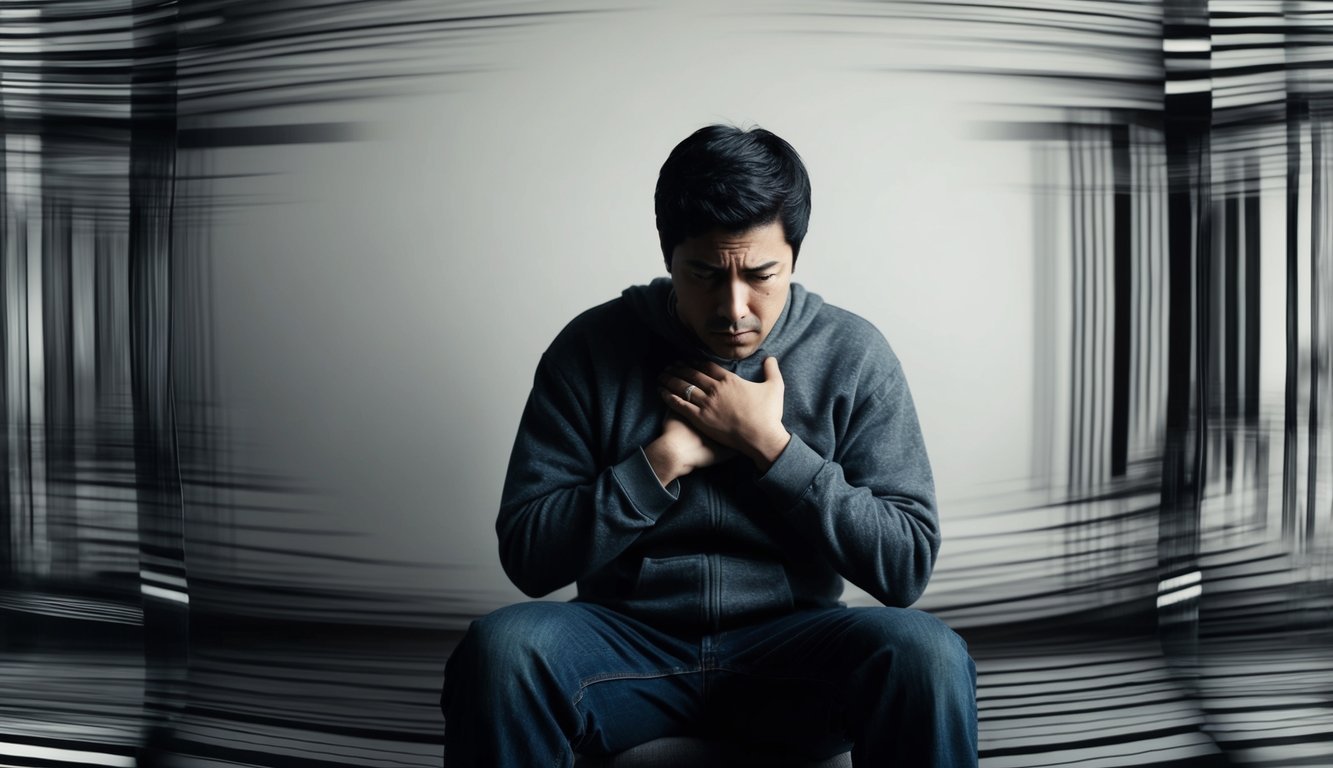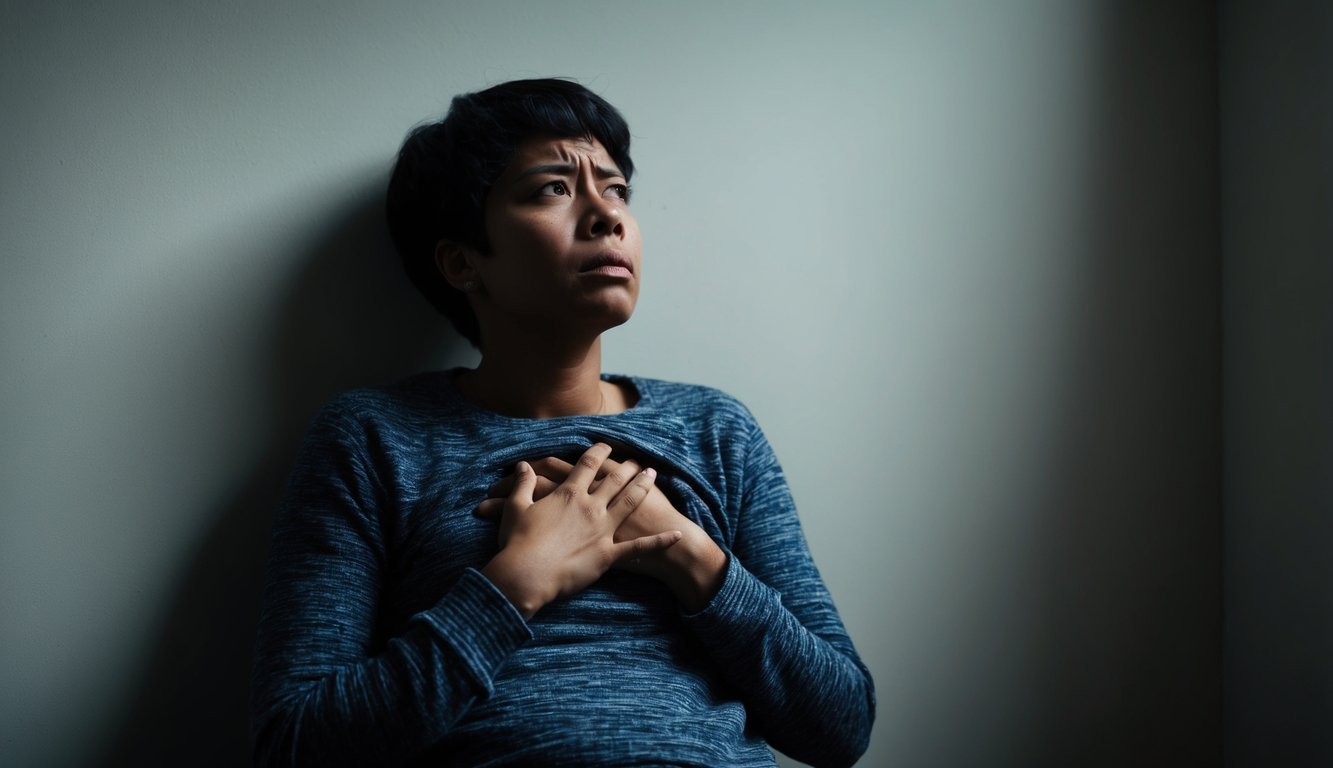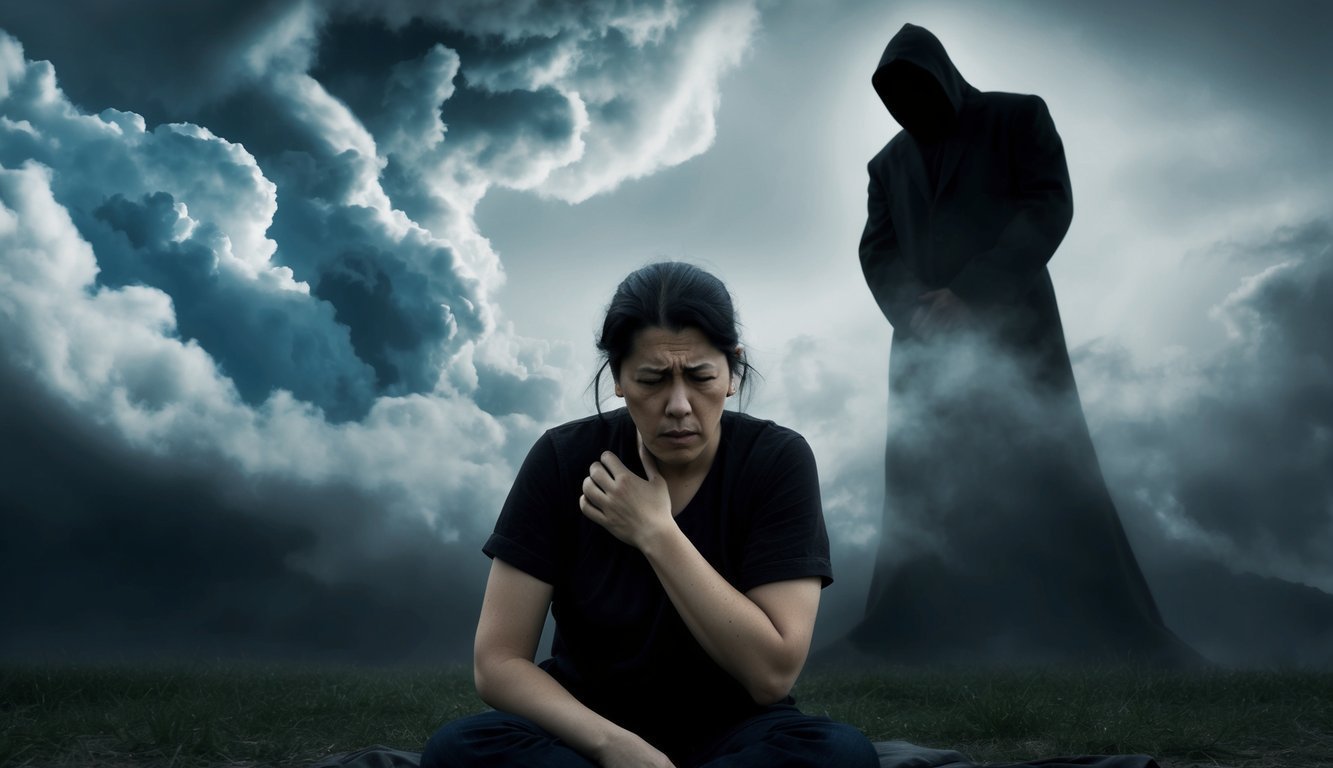PsychNewsDaily Publishers
100 Summit Drive
Burlington, MA, 01803
Telephone: (320) 349-2484
PsychNewsDaily Publishers
100 Summit Drive
Burlington, MA, 01803
Telephone: (320) 349-2484
Anxiety disorders are complex mental health conditions characterized by persistent worry and fear, significantly affecting daily functioning and overall quality of life for millions globally.

Anxiety disorders constitute intricate mental health conditions marked by ongoing worry and fear. Affecting millions globally, they can significantly impair daily functioning and diminish quality of life.
Generalized anxiety disorder is characterized by excessive concern about a wide range of life aspects. Social anxiety disorder triggers extreme fear in social situations and scrutiny from others. Panic disorder involves repetitive, unexpected panic attacks.
Specific phobias represent intense fears related to certain objects or situations. Post-traumatic stress disorder (PTSD) emerges following the experience or witnessing of traumatic events. Separation anxiety disorder reflects a fear of being away from attachment figures.
Obsessive-compulsive disorder (OCD) consists of intrusive thoughts and repetitive actions. Agoraphobia is the fear of scenarios where escape may prove difficult.
Genetic predispositions can influence the development of anxiety disorders, with some individuals inheriting a vulnerability. Additionally, imbalances in brain chemistry, particularly regarding neurotransmitters like serotonin, may contribute to anxiety symptoms.
Environmental circumstances, such as childhood trauma, abuse, or neglect, can heighten the likelihood of developing anxiety disorders. Prolonged stress, significant life transitions, or traumatic incidents can trigger or intensify anxiety symptoms in those predisposed.
Medical issues, including thyroid disorders or heart arrhythmias, can sometimes mimic or contribute to anxiety symptoms. Conversely, substance abuse, particularly involving alcohol or caffeine, might aggravate anxiety for some individuals.
Personality attributes like perfectionism or low self-worth may enhance the susceptibility to anxiety disorders. Learning and cognitive aspects, such as negative thought patterns, play an important role in sustaining anxiety symptoms.

Anxiety can manifest through a variety of physical and emotional symptoms that significantly affect daily life. These symptoms usually involve the cardiovascular, respiratory, cognitive, and muscular systems, establishing a complex connection between bodily sensations and psychological strain.
Anxiety often triggers increased heart rate and palpitations, leading individuals to feel their heart racing in their chest. This may be accompanied by chest pain or tightness, often mistaken for heart issues. Shortness of breath is another frequent symptom, resulting in feelings of suffocation or breathing difficulties.
Some individuals may experience rapid breathing or hyperventilation, intensifying feelings of panic. Dizziness or lightheadedness may occur due to fluctuations in blood flow and oxygen levels. Increased sweating, especially in the palms, underarms, or overall body, is also common.
Anxiety has a significant impact on cognitive abilities. Concentration difficulties are a primary symptom, making it hard to focus on tasks or discussions. Individuals might face racing thoughts or feel a sense of cognitive fog that hinders decision-making.
Restlessness and irritability are prevalent, resulting in a continuous sense of tension. Sleep disturbances, such as difficulties in falling asleep or staying asleep, are common. A persistent worry about future events or everyday matters is another notable cognitive symptom.
Social engagements can become daunting, resulting in avoidance behaviors or increased self-awareness in public circumstances.
Muscle tension commonly arises as a physical representation of anxiety, leading to aches and discomfort across the body, predominantly in the neck, shoulders, and back. Some may experience tremors or shaking, especially in the hands or legs.
Headaches, particularly tension-type headaches, are frequent and may persist. Gastrointestinal issues can accompany anxiety, presenting as nausea, stomach cramps, or other digestive problems. A prevalent complaint among sufferers is fatigue, stemming from constant alertness and muscle tension.
Jaw clenching or teeth grinding may arise, resulting in temporomandibular joint (TMJ) pain. Others may experience a sensation of weakness in their limbs or general physical discomfort.

Several effective strategies can assist individuals in managing and treating anxiety symptoms, aiming to diminish anxiety’s influence and enhance overall well-being.
Cognitive behavioral therapy (CBT) is a widely recognized and evidence-based approach for anxiety disorders. This method aids clients in recognizing and altering negative thought processes and behaviors that contribute to their anxiety.
On the other hand, psychodynamic therapy uncovers unconscious conflicts and previous experiences that may affect present anxiety symptoms. Exposure therapy gradually introduces individuals to anxiety-inducing situations in a controlled environment, fostering tolerance and reducing fear responses.
Group therapy offers a supportive space for individuals to exchange experiences and learn coping strategies from others facing similar challenges. Lastly, acceptance and commitment therapy (ACT) centers on embracing uncomfortable thoughts and feelings while committing to behavioral changes that align with personal values.
Selective serotonin reuptake inhibitors (SSRIs) are frequently prescribed for anxiety disorders, working to elevate serotonin levels in the brain, which can help modulate mood and decrease anxiety symptoms.
Benzodiazepines can offer swift relief for acute anxiety, though they are generally recommended for short-term use due to the potential for dependency. Beta-blockers may be utilized to manage physical anxiety symptoms, such as rapid heartbeat and tremors.
Some individuals discover relief through natural supplements like chamomile, lavender, or valerian root. It is essential to consult a healthcare professional before initiating any new supplement regimen.
Buspirone, a non-benzodiazepine anxiolytic, can effectively treat generalized anxiety disorder with fewer side effects compared to some other medications.
Engaging in regular exercise has been shown to alleviate anxiety symptoms. Activities such as yoga and tai chi interweave physical movement with mindfulness practices, providing dual advantages for anxiety management.
Mindfulness meditation and deep breathing exercises can assist individuals in remaining grounded in the moment and managing anxious thoughts.
Establishing a consistent sleep routine and practicing sound sleep hygiene can significantly influence anxiety levels. Reducing caffeine and alcohol consumption may also aid in mitigating symptoms.
Journaling serves as an effective outlet for articulating anxious thoughts and recognizing triggers. Cultivating a robust support system of friends, family, or support groups can provide emotional reassurance during tough times.
Utilizing time management techniques and setting achievable goals can help alleviate stress and prevent anxiety from overwhelming everyday life. Finally, engaging in hobbies and enjoyable activities fosters relaxation and a sense of achievement.

Certain demographics and conditions require specialized approaches when addressing anxiety. These factors can significantly influence diagnosis, treatment, and management strategies.
Younger individuals experience anxiety differently compared to adults. Separation anxiety disorder is commonly observed in younger children, while social anxiety may arise during adolescence. Selective mutism, which entails an inability to speak in specific social contexts, frequently appears in childhood.
Indicators of anxiety in youth may encompass:
Treatment modalities for young individuals with anxiety disorders often incorporate cognitive-behavioral therapy (CBT) tailored to their developmental stage, with family involvement being key for successful outcomes.
Chronic anxiety often exists alongside other mental health and physical issues. Post-traumatic stress disorder (PTSD) and obsessive-compulsive disorder (OCD) can intensify anxiety symptoms.
Common coexisting conditions include:
Effectively managing these concurrent conditions is crucial for comprehensive anxiety treatment. Integrated approaches may combine medication, therapy, and lifestyle adjustments. Addressing sleep disturbances and chronic pain can markedly enhance overall anxiety symptoms and improve quality of life.

Early recognition of anxiety symptoms and accessing suitable support are essential steps in effective anxiety management. Awareness of warning signs and knowing when to consult a professional can substantially improve outcomes for those struggling with anxiety.
Identifying anxiety can be challenging, as symptoms differ from person to person. Common indicators include excessive worry, restlessness, and a pervasive sense of doom. Physical manifestations like a racing heart, sweating, and trembling frequently accompany these symptoms.
If anxiety hinders daily activities, seeking professional assistance is vital. A mental health expert can facilitate an accurate diagnosis and propose suitable treatment alternatives. They may employ various assessment methods to gauge the severity of symptoms and ascertain if a clinical anxiety disorder is present.
Continual symptoms that persist beyond two weeks, difficulty in controlling anxieties, or experiencing panic attacks are clear indications that professional help may be warranted.
Establishing a strong support network is essential for managing anxiety. Friends, family, and support groups can offer emotional and practical assistance.
Numerous communities provide anxiety support groups where individuals can connect and share coping methods.
Online platforms and helplines offer important information and immediate support. Mental health organizations often provide educational resources, self-help tools, and crisis hotlines for those experiencing severe anxiety.
Therapeutic interventions, such as cognitive-behavioral therapy (CBT), demonstrate efficacy in addressing anxiety disorders.
Moreover, lifestyle changes like regular exercise, sufficient sleep, and stress-reduction strategies can enhance professional treatment.
Exploring these resources and support systems can empower individuals to take charge of their mental health and cultivate effective coping strategies for anxiety management.
“`